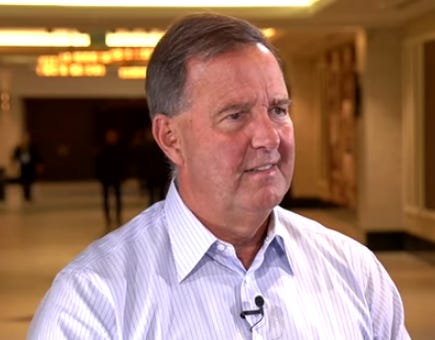It's This Simple: "Higher Interest Rates Blow Up The System"
Friend of Fringe Finance Lawrence Lepard released his most recent investor letter this week, with his updated take on the monetary miasma spreading across the globe.
Friend of Fringe Finance Lawrence Lepard released his most recent investor letter this week, with his updated take on the monetary miasma spreading across the globe.
For those that missed it, Larry also talked with me on my podcast just days ago. I believe him to truly be one of the muted voices that the investing community would be better off for considering. He’s the type of voice that gets little coverage in the mainstream media, which, in my opinion, makes him someone worth listening to twice as closely.
Larry was kind enough to allow me to share his thoughts heading into Q4 2022. The letter has been edited ever-so-slightly for formatting, grammar and visuals.
This is Part 2 of his letter, Part 1 can be found here.
WEIMAR GERMANY PARALLELS
The quote below summarizes Weimar Germany’s dilemma in the early 1920s in a nutshell. As you read it, notice how similar it is to the problems faced by global central banks today – including the Bank of England last month.
“Von Havenstein faced a real dilemma. Were he to refuse to print the money necessary to finance the deficit, he risked causing a sharp rise in interest rates as the government scrambled to borrow from every source.
The mass unemployment that would ensue would bring on a domestic economic & political crisis, which in Germany’s current fragile state might precipitate a real political convulsion. As the prominent Hamburg banker Max Warburg, a member of the Reichsbank’s board of directors, put it, the dilemma was “whether one wished to stop the inflation & trigger the revolution,” or continue to print money. Loyal servant of the state that he was, Von Havenstein had no wish to destroy the last vestiges of the old order.
Faced with these confusing & competing considerations, Von Havenstein decided to play for time, supplying the government with whatever money it needed. Contrary to popular myth, he was perfectly aware that printing money to finance the deficit would bring on inflation. But he hoped it would be modest, & that in the meantime, something would turn up to induce the
Allies to lower their demands or at least agree to a moratorium on actual payments, giving Germany some breathing space.”
Now to be clear, we do not think the US is going to become Weimar Germany (yet). There are a lot of steps between where we are today and a full-fledged hyperinflationary event.
However, we do believe that the situational math suggests that we cannot solve this without severe inflation or a massive debt restructuring (similar thing). This is depicted graphically in the chart below.




